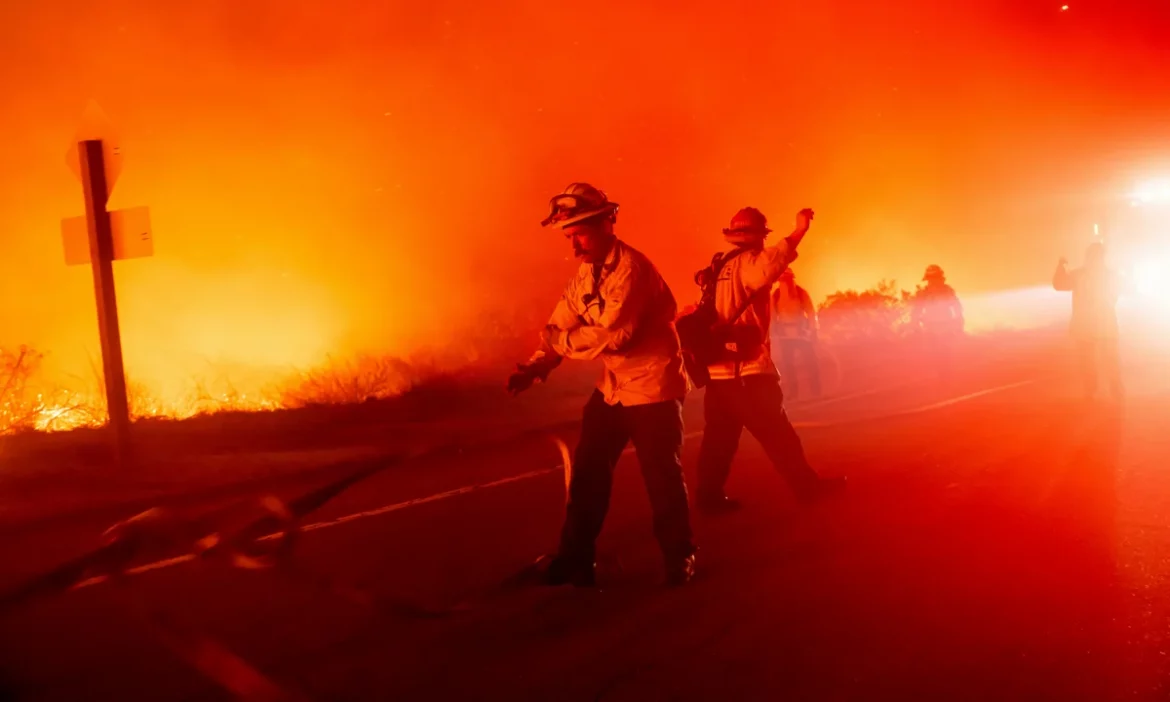Reports suggest that Southern California was bracing for more dangerous winds on Tuesday as new wildfires broke out across the region, which is continuing to grapple with the major fires that have ravaged Los Angeles communities.
Forecasters warned that strong winds would hit southern California for at least two more days. The winds had eased somewhat on Tuesday afternoon after peaking at 60mph (96kph) in many areas, but gusty conditions will return on Wednesday, said Ryan Kittell, a meteorologist for the National Weather Service’s office for Los Angeles.
The fresh high winds – that are coming amid still bone-dry conditions – mark the end of a break in dangerous high fire-risk conditions that have allowed the beleaguered city’s firefighters to largely contain the disastrous blazes that have burnt thousands of homes. The fires have killed at least 27 people and destroyed more than 14,000 structures since they broke out during fierce winds on 7 January.
“If a fire were to get started it could grow pretty fast,” Kittell said. Red flag warnings for critical fire risk were extended through Thursday at 8pm across LA and Ventura counties.
Read also: Again, Trump signs order withdrawing US from Paris climate agreement
The weather service had issued a warning of a “particularly dangerous situation” for parts of Los Angeles, Ventura and San Diego counties from Monday afternoon through Tuesday morning due to low humidity and damaging Santa Ana winds.
“The conditions are ripe for explosive fire growth should a fire start,” said Andrew Rorke, a meteorologist with the weather service in Oxnard.
Karen Bass, the mayor of Los Angeles, said on Monday that the city was prepared for any possible new fires and warned the strong winds could disperse ash from existing fire zones across southern California. She urged Angelenos to visit lacity.gov to learn about ways to protect themselves from toxic air during Santa Ana winds.
Cal Fire and local fire departments have positioned fire engines, water-dropping aircraft and hand crews across the region to enable a quick response should a new fire break out.
Story was adapted from the Guardian.
